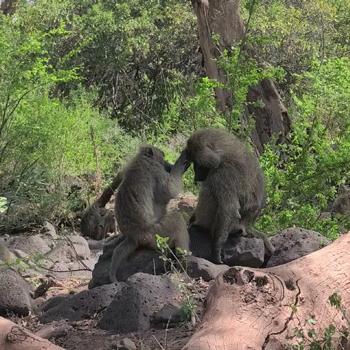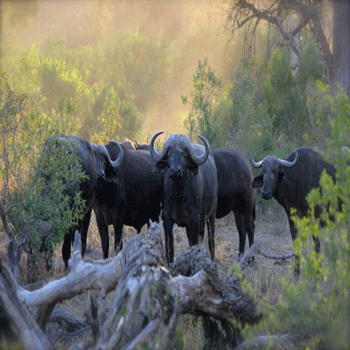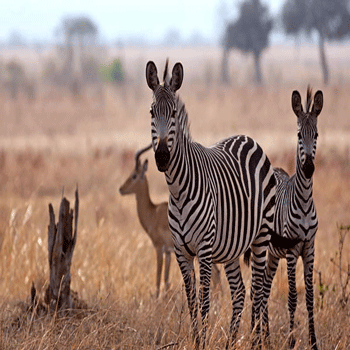Wildlife Safaris
KILIWILD EXPEDITION ADVENTURES EXPERTS
Over View
Below are our safari itineraries, descriptions of the main parks, Our safaris begin around 8AM on day one and end in the midafternoon on the last day, in Moshi. We operate private and group safaris, You decide what you want to see and for how long. You can depart on any day, for any period of time. A minimum of three days is recommended, and the five day itinerary is the most popular choice among our clients.
Tanzania Nationa Parks
Arusha National Park
Although a rather small park measuring 53 square miles (137 square km), is remarkable for its range of habitats. Located 16 miles northeast of Arusha, between Mount Kilimanjaro and Mount Meru, Arusha National Park features a miniature volcanic crater (Ngurduto Crater), a river (Jekukumia River), a highland rain forest, acacia woodlands and a string of crater lakes (Momella Lakes). The park is a home to Colobus monkeys, velvet monkeys, buffalo, hippos, elephants, and giraffe. Waterfowl is abundant here as well. Arusha National Park offers many beautiful panoramic views, including spectacular views of both Mount Kilimanjaro and Mount Meru.
Lake Manyara National Park
Is located 75 miles (125 kms) west of Arusha between the cliff of Great Rift Valley and Lake Manyara. The park is 205 square miles (330 square kms) and 70% of that is covered by Lake Manyara itself. The park contains a large variety of habitats – such as rift wall, acacia woodlands, and an area of open grasslands. The most famous spectacle in the park are the tree climbing lions, which are occasionally seen on the branches of acacia trees. Other animal are found in the area includes large herd of buffalo’s, elephants, giraffes, impalas, monkeys, baboons, hippos, as well as million pelicans and flamingos. A great variety of smaller animals which can be observed in the course of the single day.
Ngorongoro Conservation Area
Located in the great rift valley, the Ngorongoro Conservation Area is a gigantic fracture of the earth crust. Within this beautiful and unique landscape lies alkaline soda lakes, a series of peaks and volcanoes, dense rain forests, vast plains, acheological sites and Masai villages. This protected area is the land of the semi-nomadic Masai, who can be seen grazing their vast herds of cattle. Although the Tanzanian government has tried to encourage the Masai to give up their customs and adapt to modern African life, the proud Masai have resisted. During your visit, it is possible to visit nearby Masai villages, called boma, to observe their traditional dance and to go inside their mud and dung huts.
Ngorongoro Crater
Ngorongoro Conversation Area houses one of the world’s greatest natural spectacles – the home to almost 30,000 animals. It is impossible to give a fair description of the crater, for there is nothing with which to compare it. Once an active volcano, Ngorongoro Crater collapsed leaving a caldera 12 miles (20 kms) in diameter. With no breaks at all in its steep walls, this is the largest intact caldera in existence. The bottom of the crater is 165 square miles (265 square kms), dotted with watering holes, shelters an abundance of animals in an area naturally enclosed by the slopes of the volcano. The crater is famous for viewing black rhinos, for which there are very few left. Other animals that can be seen include elephant, buffalo, zebra, wildebeest, gazelle, monkeys, and ever hungry predators including lions and hyenas.
Serengeti National Park
Covering an immense 9,170 square miles (14,763 square kms), is Tanzania’s largest national park and undoubtedly the best known wildlife sanctuary in the world. Over three million large game animals inhabit these rolling grasslands, known as the ‘endless plains’. Here one can witness the unique migration of almost 1.5 million wildebeest undertake a circuit of 600 miles (1,000 kms) in search of new pastures, from the central plains to the permanent water holes at the the park corridors. About 35 species of plain animals can be observed including the ‘big five’ – elephants, rhinos, lions, leopards, buffalos – and large herds of wildebeest, gazelle and zebra.
Olduvai Gorge
Olduvai Gorge is known as the ‘cradle of mankind’. Through the excavation of Dr. Louis Leakey and his wife Mary, the gorge has yielded numerous remains dating back almost two million years. The remains of the earliest human were found in this area which revolutionized theories of how man evolved. The historical findings of the famous skull, other fossils and stone artifacts have strengthened the belief that Africa is the birthplace of prehistoric man. There is a small museum here which displays some of the finds from this region. Olduvai Gorge lies between the great wildlife sanctuaries of the Ngorongoro Crater and Serengeti National Park, and is a common rest stop during the bumpy ride between these parks.
Tarangire National Park
park covers approximately 2,600 square miles (6,700 square kms), and lies to the south of a large open grass plain in southern Masai land, 70 miles (115 kms) from Arusha. It is the sixth largest national park in Tanzania. Tarangire is commonly famous for its abundant birdlife. Visitors are frequently entertained by encounters with browsing elephants, which inhabit this park in the large herds. Other animals that can be seen include buffalo, giraffe, zebra, elands, warthogs, greter kudu, gernuks and impalas. Huge magnificent baobab trees, the Tarangire River, and volcanic mountain ranges add to the scenic splendor of this unique national park.
Lake Natron
Lake Natron is a salt lake in Tanzania’s Rift Valley, located north of the Ngorongoro Conservation Area, near the Kenyan border. Ol Doinyo Lengai, an active volcano, dominates the landscape here. The surrounding area is semi-arid and dusty. Though millions of flamingos make their home on the lake, feeding on algae, not much else is supported by this hot, harsh habitat. The only fish in these waters is the alkaline tilapia. The lake is 170 square miles wide and less than 10 feet deep, but the size of the body of water varies depending on the precipitation and evaporation. Between July and October is the flamingo’s breeding season and the best time to visit. However, visitors to this place come more for the scenery than for the wildlife.
Lake Eyasi
The meadows along the shores of the mildly alkaline Lake Eyasi are not only home to a wide variety of wildlife including leopard, hippo, monkeys, birds, flamingos, storks and pelicans, the area is also home to the Hadzabe bushmen, the last tribe of hunter-gatherers in East Africa. Some 200 to 400 Hadzabe Bushmen still live much as they have for tens of thousands of years. Their simple shelters are built from grass, branches and earth. During the rainy season they still live in caves. During your visit to Lake Eyasi, you may visit with the Hadzabe Bushmen to witness their primitive way of life, and even accompany them on a early morning hunt.






